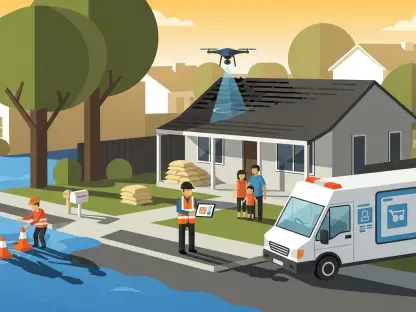In today’s fast-paced world, the demand for digital compliance and risk management is at an all-time high. Certificial has emerged as a leader in real-time insurance verification, transforming industries such as transportation, construction, and real estate with rapid technological advancements. This innovative approach directly addresses the need for swift, precise access to insurance data, eliminating cumbersome paperwork and manual verification. Through the Smart COI Network™, Certificial has revolutionized the way organizations manage Certificates of Insurance (COIs), ensuring partners have up-to-date and reliable coverage, ultimately mitigating errors and omissions risks.
Real-Time Insurance Verification Features and Performance
Certificial’s real-time insurance verification technology presents a robust suite of features designed to streamline processes and enhance operational efficiency. At its core, the Smart COI Network™ is a dynamic platform that facilitates immediate access to COI data, eliminating the lag typically associated with manual reviews. This network provides everything from automatic intake to continuous monitoring, empowering partners like Truckstop to make quick policy adjustments and ensure compliance with industry standards.
Additionally, seamless automation and integration are crucial aspects of Certificial’s technology, dramatically reducing administrative effort and facilitating data precision. By collaborating with industry leaders such as Achilles Global Risk Management and Apex Analytix, the platform builds an interconnected ecosystem that bridges various sectors, offering seamless COI management across diverse applications. The technology efficiently addresses a complex landscape of digital compliance and risk management, setting the groundwork for a future where insurance verification happens in real-time with minimal human intervention.
New Developments in the Field
The real-time insurance verification landscape continues to evolve, defined by a shift toward greater digital transformation and integration. Certificial’s Vendor Management Partner Program signifies a pivotal move toward widespread adoption of tech-driven verification processes. By expanding partnerships and enhancing integrative capabilities, the initiative promises to propel industries into an era where risk reduction is not just possible but a standard expectation.
As more operators recognize the benefits of real-time data access, the tide of technological innovation is expected to bring significant advances. This movement offers opportunities for further ecosystem connectivity, increasing stakeholder value through preventive risk management and comprehensive insurance visibility. The continuous growth of digital compliance practices highlights the critical role of instantaneous data in fostering trust among entities and consolidating streamlined processes.
Practical Applications and Industry Examples
Certificial’s technology has found utility across multiple sectors requiring efficient insurance verification solutions. Industries such as freight and procurement benefit immensely from the system’s capabilities, with enhanced speed and accuracy impacting areas like customer policy changes and coverage data management. Real estate and construction fields are particularly well-served, gaining from the platform’s ability to ensure partners work with the most current and relevant coverage forms.
By facilitating direct access to insurance data, organizations experience a reduction in operational risk, compliance headaches, and the fear of outdated information affecting their transactions. The approach not only simplifies COI management but also offers long-term benefits of peace of mind and improved vendor relationships, making it an indispensable tool for sectors driven by reliability and precision.
Challenges and Potential Obstacles
Despite its promising advantages, real-time insurance verification faces several potential impediments. Technical hurdles can be daunting, demanding extensive coordination in data handling and integration. Moreover, navigating regulatory landscapes requires careful adaptation to ensure technology aligns with market-specific compliance requirements.
Ongoing development efforts aim to address these challenges, focusing on refining system functionalities and broadening the scope to accommodate evolving industry needs. A continued commitment to overcoming adoption barriers will drive future technology enhancements, making it more accessible to both large corporations and smaller enterprises alike.
Prospects and Future Implications
Looking ahead, Certificial’s insurance verification technology is poised for further breakthroughs and expanded influence across various sectors. The integration of real-time data into larger ecosystem frameworks promises significant improvements in operational efficiency, accelerating the shift toward comprehensive digital risk management. Emerging partnerships and expanded collaborative networks are expected to augment system capabilities, paving the way for new advances and applications.
The long-term impact of this technology may redefine industry standards, setting a precedent for how compliance and risk are managed across the business spectrum. The facilitation of insurance visibility on demand marks a transformative step, capable of reshaping practices to foster trust and security between partners and clients.
Final Thoughts
Summing up the analysis, Certificial’s real-time insurance verification technology offers a powerful solution for modernizing COI management. By combining automation, integration, and a robust network infrastructure, it presents capabilities that tackle inefficiencies and improve risk mitigation across various sectors. The system’s adaptability and continuous evolution signal a promising trajectory toward more inclusive and disruptive innovations in the broad field of digital compliance. As more industries recognize its potential, future integrations are likely to enhance performance and efficiency, setting benchmarks for comprehensive insurance verification processes.









